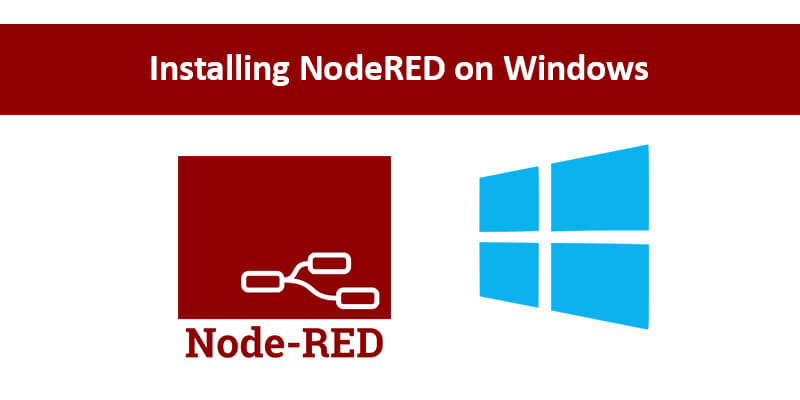What is NodeRED and How to install it on windows operating system? NodeRED is an open source flow based visual programming tools developed by IBM. They also created API and online services for Internet of Things. It is introduced in 2016 and gradually gaining its popularity as it is opensource, lightweight and based on JavaScript. In the beginning, I thought it was difficult.But after exploring it, NodeRED is excellent and provides many connectivity options.
In recent days, NodeRED is pre-installed in many devices like
- Raspberry Pi
- Siemens, SIMATIC IOT 2040
- Samsung, Artik
- Smart-Tech, ST-One
- Intel, IoT Gateway
- GE, Predix Developer Kit
- Fujitsu, INTELLIEDGE A700 Appliance
- FreeWave Technologies, ZumLink and ZumIQ
- In-Tech Automação industrial, INPI-CPU-3B
- BeagleBone
- Schneider Electric – Harmony HMIBSC Core Box
- Weidmüller, UC20-WL2000-AC
Cloud Services
- AT&T, AT&T IoT Platform
- Cisco, Meraki
- Nokia, Innovation Platform
- Fujitsu, COLMINA Platform
- Siemens, MindSphere
- Hitachi Vantara, Lumada
- IBM, IBM Cloud
We will learn more about NodeRED in the upcoming blogs. So lets get started with NodeRED installation.
NodeRED installation in Windows:
NodeRED is supported in many operating systems like Linux, Windows, etc. This guide will help you install NodeRED in windows.
Step 1: First we need to install nodeJS and NPM on our system. To install latest version of NodeJS go to Official NodeJS Website and choose the stable version (marked as Recommended for most users). The current version when I’m writing the blog is 14.17.3
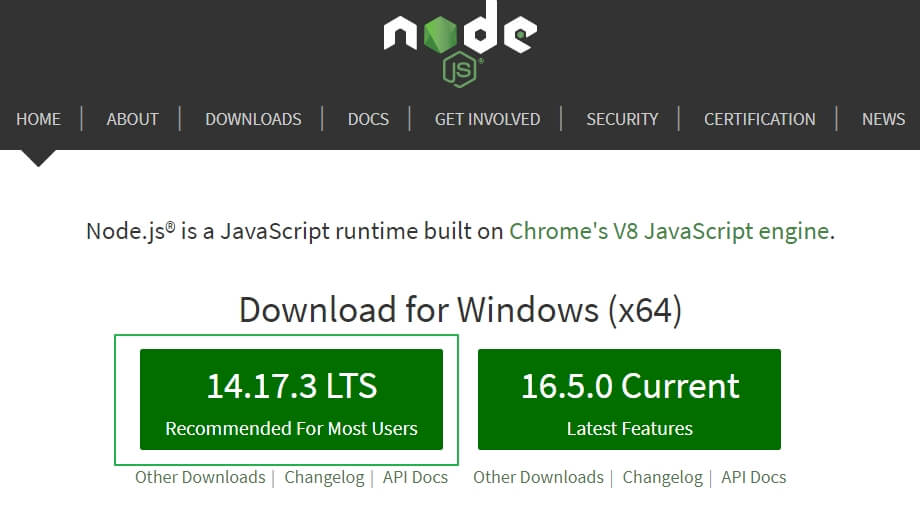
Step 2: After downloading the file, double click and install the file. Proceed with default installation steps and click finish.
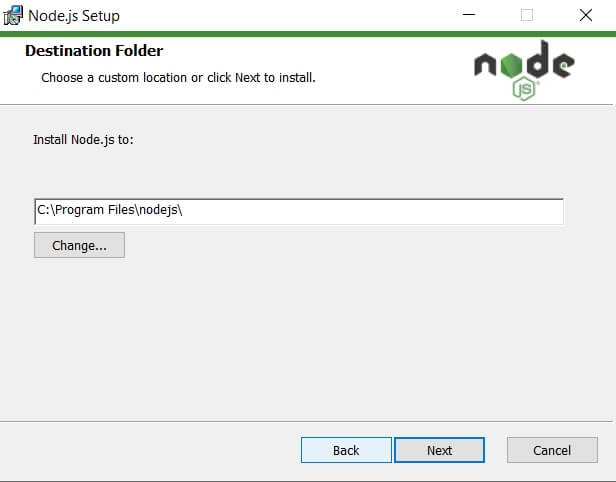
Step 3: To verify what is the current version of nodeJS, you can use the following command.
node --version
If you want to check both NodeJS Version and NPM Version you can use the following command
node --version && npm --version
The NPM Should be installed by default when installing NodeJS, for few OS like Raspberry Pi provide just NodeJS without NodeJS or NPM. If that is your case, you need to install npm too. You might be not able to see ‘Manage Pallette’ tab on NodeRED if npm was not installed (incase of NodeRED itself came by default on some OS).
Step 4: Now we can install the NodeRED. Incase if you got any error regarding permissions, try opening the command prompt by right click on it and run as administrator.
Go to command prompt and install nodeJS at the users location. In my case it is C:\Users\DELL>
Use the following command to install NodeRED.
npm install -g --unsafe-perm node-red
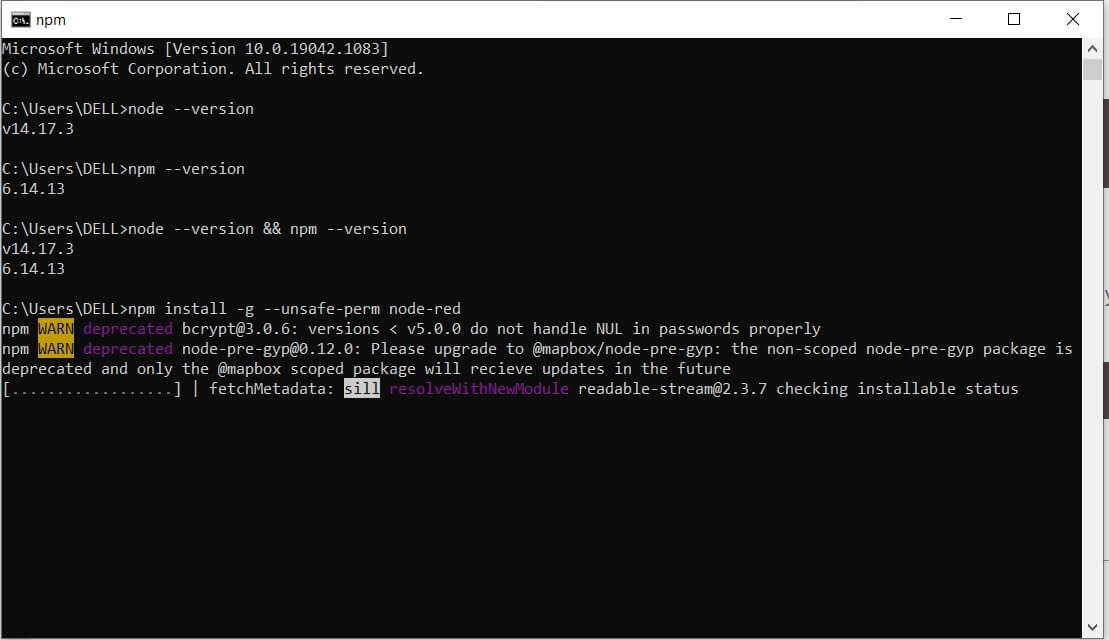
It will take few minutes and it will be installed successfully.
Step 5: Now after installation, you can run NodeRED using the following command
node-red
It will show server running at with local IP Address – http://127.0.0.1:1880/
You can copy it or type manually in the web browser to open NodeRED. This IP Address is called local IP, but if you want to access NodeRED on another computer (in same network), then you need to replace the Local IP Address (127.0.0.1:1880) with the device IP Address (IP Address of the NodeRED installed PC/Raspberry Pi.
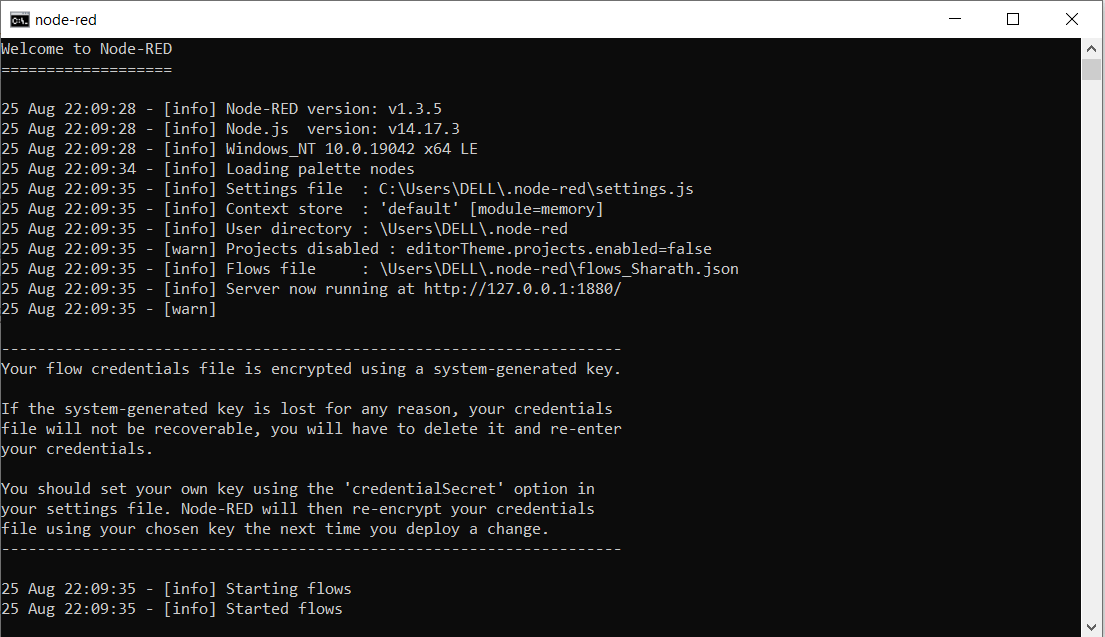
This is the space for creating our NodeRED FLows
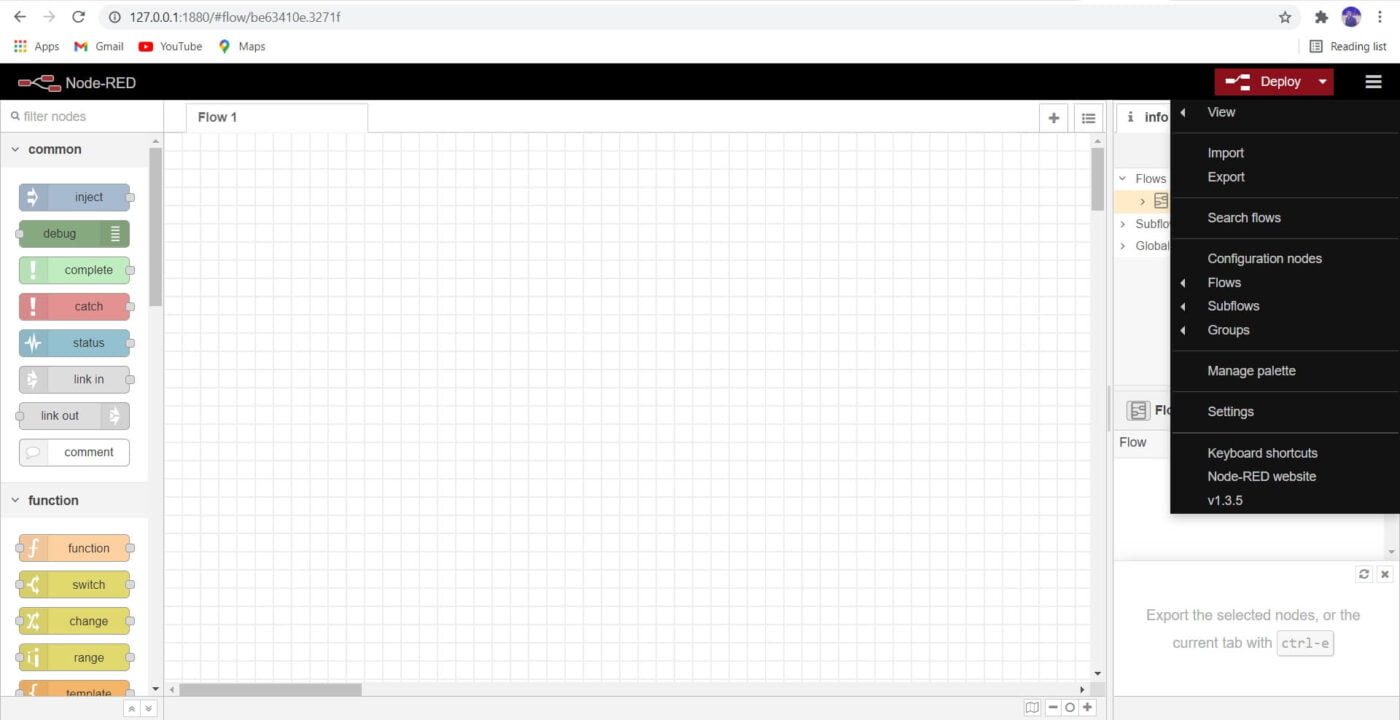
NodeRED not only available in windows, it will run on many platforms like Raspberry Pi OS, Ubuntu, Linux, Windows, Android, etc. You can also install NodeRED remotely on the cloud server by installing an Ubuntu Instance and Install the NodeRED. The cloud services are Amazon Web Services, Digital Ocean, Microsoft Azure, etc.
Testing with Inject and debug node:
The simplest testing nodes are Inject and Debug node. These two nodes are very useful for debugging by manually entering some values like timestamp, String, Number, JSON Data, Boolean values, etc, in Inject node, and debug node displays the injected data. A sample inject, debug node is shown below for passing timestamp to a debug node.

Troubleshooting:
Incase, you are receiving an error when running the node-red command, like this below
‘node-red’ is not recognized as an internal or external command, operable program or batch file.
There is a possibility that the user PATH variable is not set for Windows Power Shell. To set the path, type environment variables in windows menu bar, choose ‘Edit System Environment Variables’ and set the path like this below in the image.
C:\Windows\System32\WindowsPowerShell\v1.0



